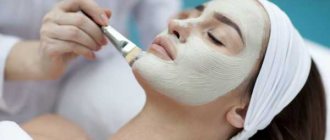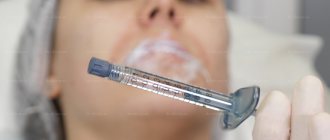How chickenpox begins and develops Chickenpox is an acute infectious disease characterized by a profuse itchy rash on the skin and surface of the mucous membranes. It does not appear instantly: the incubation period can range from 10 days to 3 weeks.
Chickenpox is highly contagious. The virus is transmitted through direct contact with a carrier. Children often get sick in entire groups (groups in kindergarten or classes at school). We will tell you how to recognize the disease in the shortest possible time to prevent its spread.
What causes chickenpox?
The causative agent of this disease is human herpesvirus type 3. It belongs to the subfamily of alphaherpesviruses, which have the following features:
- a wide range of hosts (humans and animals);
- short reproductive cycle;
- rapid reproduction;
- volatility;
- rapid decay of affected cells;
- death under the influence of UV rays.
When the chickenpox virus enters the human body, for the first three to four days it is contained within blisters covering the skin. On the eighth day it ceases to be detected. Outside a living organism, type 3 herpesvirus dies in 15 minutes.
The rash usually appears 48 hours after infection. The carrier remains infectious for another five days. Infection occurs by airborne droplets. Contact-household infection is also possible.
Basic properties of brilliant green
An alcohol solution of brilliant green is a widely known and affordable antiseptic used for external treatment. It is offered in pharmacies in the form of a liquid, poured into bottles, and a medical felt-tip pen, which simplifies the process of applying the composition.
Chickenpox: what it is, how it manifests itself and how it is treated
The drug belongs to the group of disinfectants and has a pronounced antimicrobial effect. Ethyl alcohol, on the basis of which the solution is prepared, enhances the disinfecting effect, further drying the tissue.
The destructive effect of brilliant green is manifested in relation to gram-positive microorganisms, pathogenic fungi, staphylococcus and diphtheria bacillus. A big advantage is the absence of systemic effects and negative effects on tissue.
How to recognize chickenpox?
To get sick, two conditions are enough: to be near someone with chickenpox and not have a history of it. Everyone gets infected with it, regardless of age and immunity strength. Nothing can be done during the incubation period. All we have to do is wait for the first signs:
- temperature rise to 38-39 degrees;
- general malaise;
- decreased appetite;
- the appearance of a characteristic rash.
At first, the rash is rare and looks like spots or pimples. Under no circumstances should you squeeze them out: the scar will be very deep. The volume of the rash gradually increases, covering all parts of the body.
In the early stages, chickenpox can be mistaken for an allergic reaction. But contact dermatitis rarely spreads throughout the body and never develops into blisters.
In this case, the person feels severe itching. Scratching chickenpox is also not advisable. This will not bring relief, but there is a risk of getting a lot of scars on the skin or causing a secondary infection.
How many days should you apply chickenpox?
It is not possible to answer exactly how much brilliant green to apply to a chickenpox rash, for the reason that the course of the disease has its own individual differences in each individual episode. On average, the infection clears up within 10-12 days.
During this period of chickenpox, vesicles (pimples with fluid-filled bubbles) must be smeared once or twice a day. Repeated daily treatment of the same rashes should be avoided, because drying out the skin intensifies the already severe itching and increases the risk of injury to individual elements, which in the future will certainly lead to the appearance of quite noticeable scars at the site of the rash.
Due to the alcohol composition of the drug, it is not recommended to smear brilliant green on a person’s face if they have chickenpox, in order to also avoid excessive drying of the epidermis.
In addition to the fact that chickenpox is usually treated once a day, it is necessary to reduce the amount of water treatment to a minimum until the dried crusts begin to peel off on their own. It is also necessary to reduce the amount of time the patient spends in the open sun.
Periods of chickenpox
Quite a long time passes between infection with the herpes virus and complete recovery. There are four periods:
- incubation (up to three weeks);
- prodromal (up to two days before the appearance of rashes);
- rashes (several waves for two to five days);
- crust formation.
During the prodromal period, the patient experiences general malaise. It is expressed in weakness, nausea, headache. Sometimes the temperature rises to 38-39 degrees, and vomiting occurs. In some patients, there is no prodromal period, and rashes immediately appear some time after infection.
Chickenpox in adults causes severe complications. They do not appear immediately. Some appear after the tenth day of the disease, others after a month.
And here it is - chickenpox...
First, the child complains of feeling unwell: suddenly he has a headache, body aches, and a sore throat. It is clear that he is unwell, but what kind of illness is still unclear. Then (a few hours later or the next day) the temperature rises, and a rash appears against its background. However, there may be no fever or symptoms preceding it, but there will definitely be a rash.
The elements of the rash have their own “life cycle”: small red spots turn into bumps resembling mosquito bites (papules), then liquid accumulates in them (such elements are called vesicles). The vesicles burst, and crusts appear in their place, which then fall off, revealing clean skin. The transformation of papules into vesicles usually occurs within 24 hours; crusts appear a couple of days after the formation of vesicles. But they take longer to disappear – this can take up to two weeks.
The rash appears in waves, as people say - “sprinkles.” At the same time, there may be papules, vesicles, and crusts on the child’s body. On average, the rash period lasts from 5 to 8 days. It is believed that five days after the last elements of the rash appear, the child ceases to be contagious.
In other words, there is reason to believe that in just over a week the disease will pass, and it will leave behind a short-lived memory in the form of crusts, which will also disappear without a trace. It is hardly possible to speed up recovery. Therefore, all treatment for chickenpox is symptomatic. It is aimed at eliminating the problems that the disease brings with it. The first problem is temperature. If it is not high (and it may not exist at all) or if the child easily tolerates high temperature, it is better not to bring it down at all. Consult your doctor - he will tell you how to act specifically in your case.
JSC Family Doctor - Treatment of Chickenpox
The second problem is itching. The chickenpox rash is very itchy, but you can’t scratch it. The virus accumulates in the vesicles, and scratching can cause additional spread of the rash throughout the body. Also, damaged vesicles heal less well, their contents can fester (in this case, the vesicles turn into pustules), and in their place, pockmarked pits form, which do not disappear for a long time.
Make sure your child does not sweat: sweat increases the itching. Change your underwear more often.
In our country, it is customary to smear chickenpox rash with brilliant green. The treated vesicles dry out faster, preventing the possibility of their inflammation. This will not make the child recover any faster, but sanitary treatment of the rash is encouraged. In the end, brilliant green is a good marker: if you don’t need to smear anything else, it means the rash has stopped and the disease is over.
If new elements of the rash no longer appear, you can (and should) go for a walk with the child. However, you should stay away from other children, as it will still be contagious for some time.
When all the vesicles have crusted over, the child can be washed, but it is better not to use any shampoo or soap. Under no circumstances should you rub your child with a washcloth - touches should be gentle so as not to tear off the scabs. It’s better not to wipe it with a towel, but to blot it.
How does chickenpox occur in children?
Chickenpox is considered a childhood disease, since it mainly affects children of preschool and primary school age. In children, the illness period is relatively short (about 10 days), while in adults it can last three weeks or more.
During this time, the rash goes through several stages:
- erythematous spots;
- nodular rash (papule);
- ulcers (pustules);
- crusts.
Recovery occurs when all the scabs fall off. Until this point, the person is still contagious and can pass the chickenpox virus to others. The first wave of rashes usually passes quickly, but it is replaced by several more.
As a rule, there are no complications in children. The main thing is that the baby does not scratch the rash to avoid secondary infection and scar formation. Severe disease occurs in newborns. When the first signs of chickenpox appear in an infant, you should immediately call a doctor.
What to replace
There are many worthy drugs that can successfully replace the brilliant green solution at home. Almost all of them have antiseptic properties, are able to relieve itching and accelerate the healing of wounds, turning burst blisters into crusts.
Let's consider what can replace the brilliant green solution for chickenpox, so that the product has the same effect as brilliant green. In this case, doctors recommend using:
“Fukortsin” is a bright crimson liquid that acts like brilliant green and also dries and disinfects the surface of the vesicles. Apply to the surface of the skin in the morning and, if necessary, several times a day on the vesicles that appear. It differs in that it is washed off quite quickly and leaves not such obvious marks as with green paint.
Salicylic alcohol - this product treats the surface of the vesicles in the same way as brilliant green. It is important to remember that salicylic alcohol is best for oily skin. But in a patient with dry skin, alcohol can cause excessive dryness of the skin.
Calamine lotion is an Israeli product. The active components of the product are zinc oxide and calamine. They have a cooling, soothing and disinfecting effect. Apply to the area of the vesicles with a gauze swab; wait until the product dries before putting it on. If it is impossible to purchase lotion, you can use Calamine ointment - it is applied to the surface of the body three times a day.
“Poksklin” is a special remedy for chickenpox. It is used for both mild and severe cases of the disease. Promotes cooling, relieves itching and has a disinfecting effect. Contains bioactive components and acts extremely gently on the surface of the skin without causing allergies. Apply to the skin several times a day;
"Zindol" - zinc oxide with glycerin. Excellent in the treatment of chickenpox. The drug has an anti-inflammatory and disinfecting effect, perfectly dries out weeping wounds and promotes the rapid convergence of crusts. Bubbles can be treated as often as possible, preferably at least six times a day.
"Miramistin" is an excellent remedy for treating the oral cavity if the chickenpox rash has affected the mucous membrane. To speed up healing and relieve itching, you must thoroughly rinse your mouth with the prepared solution at least four times a day. In hard-to-reach places, you can use a spray that allows you to treat deep-lying vesicles.
Potassium permanganate solution (potassium permanganate) - the product is dissolved in water and adjusted in concentration to a light pink tint. It is used not only for wiping vesicles, but also for treating large areas. For example, children are recommended to add potassium permanganate to their baths, and adults can wash it with the solution after a shower.
Brilliant Green solution is just one of the topical treatment options that can be used. If left untreated, chickenpox in children can leave unsightly scars. The solution has a disinfecting and drying effect, so that patients practically do not scratch the rash, and the vesicles themselves disappear naturally. It is precisely in order to mark the chickenpox rash and promote the healing of the vesicles that the brilliant green solution is used.
Atypical forms of chickenpox in adults
In adults, chickenpox is accompanied by symptoms of intoxication of the body. Atypical clinical forms are also possible:
- Rudimentary. The rash is either absent or does not develop beyond the blotchy stage.
- Hemorrhagic. A bloody impurity appears in the blisters, and small hemorrhages appear on unaffected areas of the skin. Black crusts form.
- Bullous. Along with the usual chickenpox, other blisters appear. They are filled with a cloudy yellowish liquid and take a long time to dry. If such blisters burst prematurely, the area of skin underneath them becomes wet for a long time and does not heal.
- Gangrenous. The tissues inside the blisters die, and ulcers form underneath them. Cleaning of pus is often required.
The generalized form of chickenpox is considered separately. It is characterized by damage to internal organs. It is difficult to tolerate and there are deaths. At risk are patients taking steroid hormones.
How to help with chickenpox?
There is currently no cure for chickenpox. Usually the disease goes away on its own, and therapy is limited to smearing the rash with aniline dyes with bactericidal properties. A solution of brilliant green (“zelenka”) is usually used. You can take an antipyretic to relieve your general condition.
To relieve itching use:
- solution of iodine tincture (2-3%);
- solution of potassium permanganate (1:5000);
- hydrogen peroxide (3%);
- glycerol.
In some cases, antihistamines can help relieve itching. But you should not take them uncontrollably: it is better to call a doctor at home and determine acceptable medications. Showering is allowed, but without a washcloth to avoid damaging the bubbles. The same applies to the use of towels - after water procedures, you need to carefully pat your body dry with a cloth.
Precautionary measures
- You can't scratch pimples.
- If your hands are dirty, touching the rash is prohibited so as not to accidentally introduce an infection.
- It is advisable to carry out bath procedures when there are no open wounds on the body, and the vesicles and blisters have completely healed.
- Due to the fact that brilliant green dries out the skin, it is not advisable to apply it to healthy areas.
- To reduce pain, you can start taking additional medications after consulting your doctor.
Complications of chickenpox
In most cases, this disease is not dangerous; children tolerate it easily. The only threat is infection of the wound when combing with dirty hands. In such cases, staphylococci or streptococci may be ingested and a purulent infection may develop.
The chickenpox virus does not disappear from the body after recovery. Temporarily neutralized, it is localized in the spinal cord. As years pass, it can become more active and cause shingles.
In adults, complications may include:
- stomatitis (if a rash appears in the mouth);
- conjunctivitis (on the eyelids);
- inflammation of the middle ear.
The greatest danger is chickenpox pneumonia with a mortality rate of 40%. The consequences of infection with the chickenpox virus can manifest themselves in the form of neurological disorders, heart disease, and joint damage. A month after recovery, there is a risk of developing retinal inflammation and cranial nerve palsy.
How to remove traces of brilliant green from skin
Difficult to wash off brilliant green skin stains can be removed using the following simple methods:
- Baby fat cream, cover with a thin layer and leave for at least a quarter of an hour, after which it is removed;
- Rub the stained area with a slice of lemon for a while, then rinse with water;
- If there is no lemon, make a weak solution of vitamin C in water and also treat green spots on the skin.
However, it should be immediately clarified that these tips can be used when cleaning the skin surface only in the area of the abdomen or back; in other places the skin becomes very tender and sensitive. Regarding the use of rough brushes and sponges, you should also avoid them for at least a few more months.
What is chickenpox pneumonia?
This is a lung lesion that occurs in 16% of cases of chickenpox and in almost all cases if the disease occurs in a generalized form. The first symptoms may appear simultaneously with the rash:
- dyspnea;
- chest pain;
- cough with sputum (often with blood);
- bluishness of the skin.
Multiple focal nodules spread in the lungs, which on x-ray look like tuberculosis. Antibiotics do not help in this case. Against the background of chickenpox pneumonia, bronchitis often develops; in severe cases, pulmonary edema is possible.
Pneumonia that develops in the later stages of chickenpox is considered separately. It is caused by a secondary coccal infection and is a common pneumonia. The disease is treated according to the standard regimen - penicillin.
Neurological complications of chickenpox
The consequence of infection with a herpes virus in an adult can be secondary encephalitis. Inflammation develops from the fifth to tenth day of the rash, sometimes even after recovery. The pathological process can be localized in different places:
- membranes of the brain (meningitis form);
- cerebellum (atactic form);
- spinal cord (myelitic form).
- Combined damage to the brain and spinal cord (encephalomyelitis, meningoencephalitis) is also possible.
In mild cases, damage to the central nervous system by the chickenpox virus leads to loss of coordination, involuntary eye movements, hand tremors, and dizziness. In more severe cases, vision suffers (up to its complete loss). The most dangerous complication is paralysis. Mental damage, even mental retardation, is also possible.











